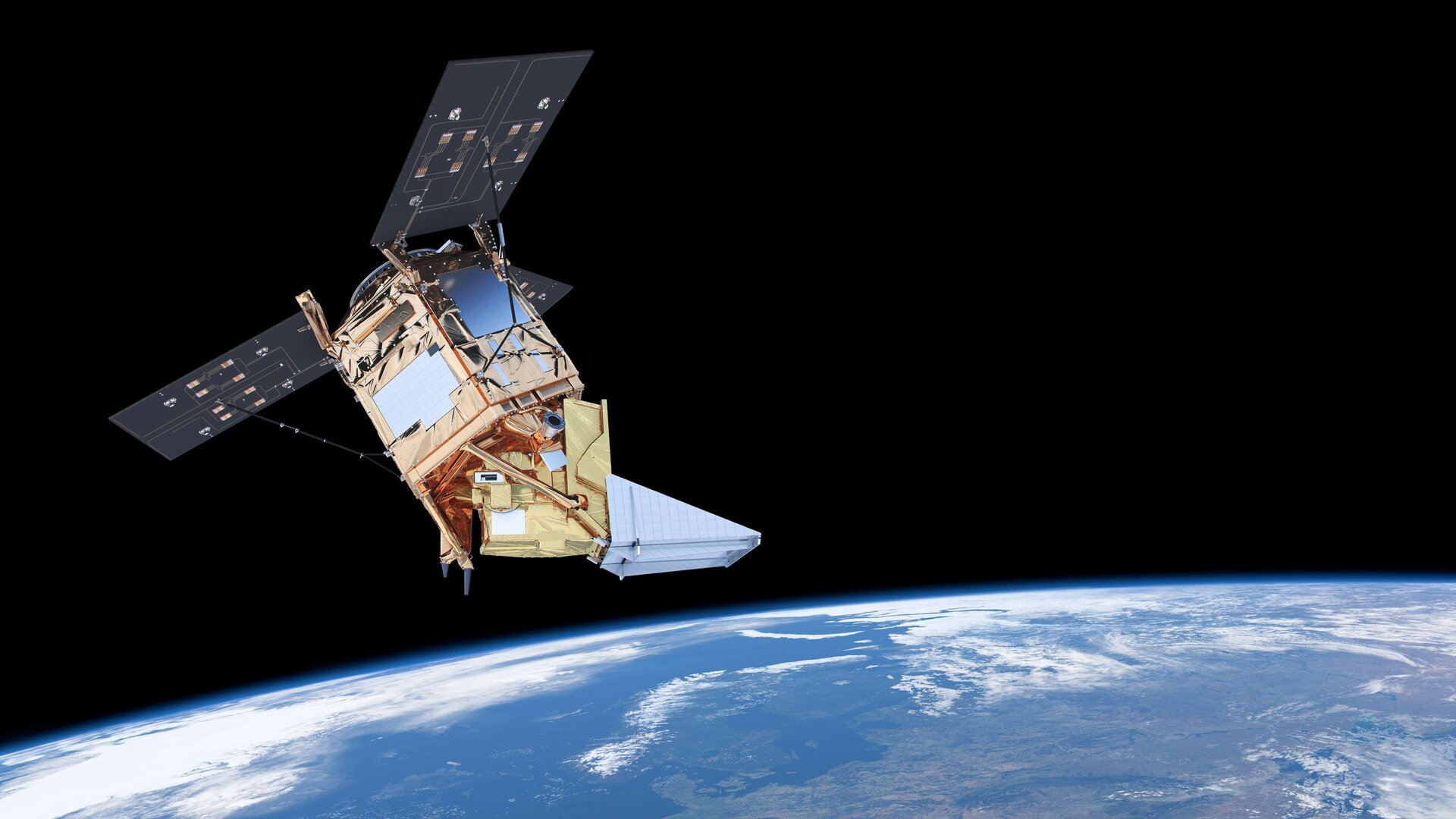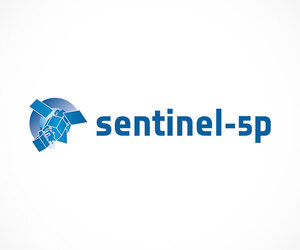Sentinel-5P operations
The Sentinels are a fleet of satellites designed specifically to deliver the wealth of data and imagery that are central to the European Commission’s Copernicus programme. This unique environmental monitoring programme is changing the way we manage our environment, understand and tackle the effects of climate change and safeguard everyday lives.
Sentinel-5 Precursor – also known as Sentinel-5P – is the first Copernicus mission dedicated to monitoring our atmosphere. The satellite carries the state-of-the-art Tropomi instrument to map a multitude of trace gases such as nitrogen dioxide, ozone, formaldehyde, sulphur dioxide, methane, carbon monoxide and aerosols – all of which affect the air we breathe and therefore our health, and our climate.
With a swath width of 2600 km, it will map the entire planet every day. The mission will also contribute to services such as volcanic ash monitoring for aviation safety and for services that warn of high levels of UV radiation which can cause skin damage. In addition, scientists will also use the data to improve our knowledge of important processes in the atmosphere related to the climate and to the formation of holes in the ozone layer.
On an interesting operational note, Sentinel-5P’s orbit will be synchronised to that of the US Suomi-NPP mission, enabling valuable synergies between the two missions’ data. This is achieved through coordination with NOAA and NASA via an exchange of orbital data.
Sentinel-5P is operated by a dedicated Flight Control Team from ESA’s European Space Operations Centre (ESOC) Darmstadt, Germany.
The mission
Sentinel-5P provides timely data on a multitude of trace gases that can affect our health such as nitrogen dioxide and carbon monoxide. It will also measure sulphur dioxide, which mainly comes from industrial processes and motor vehicle emissions, but can also be in volcanic plumes.
The mission will also map a lesser known pollutant: formaldehyde, which can be released into atmosphere through wood processing industries and from forest fires. It can irritate the skin and affect health.
Sentinel-5P launched on 13 October 2017 on a Rockot launcher from Plesetsk, Russia. It is flying a polar, Sun-synchronous orbit at altitude of 824 km and in formation with the US Suomi-NPP mission. It has a minimum life of seven years, and carries consumables for 10 years.
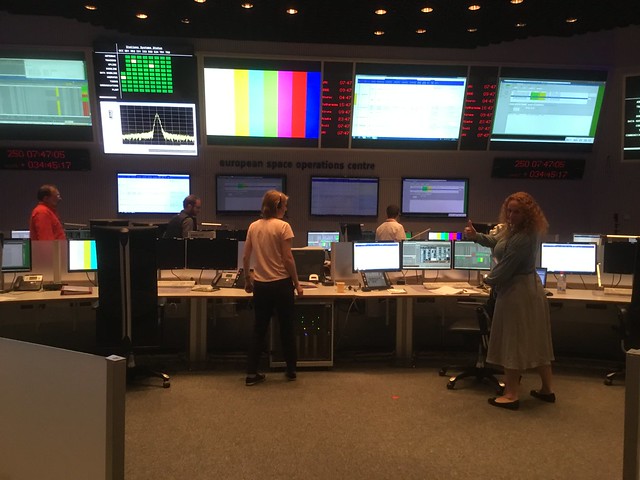
Once in routine operation, the mission’s science data will be downloaded via ground stations in Svalbard, Norway, and Inuvik, Canada. Spacecraft status information – telemetry – will be downlinked via these two plus via ESA’s 15m ground station antenna at Kiruna, Sweden, which will also be used to transmit telecommands.
| ROLE | Earth observation (EO) as part of Europe's Copernicus programme |
| LAUNCH DATE | 13 Oct 2017 |
| LAUNCHER/LOCATION | Rockot/Plestesk, Russia |
| LAUNCH MASS | 820 kg (including 82 kg fuel) |
| ORBIT | Sun-synchronous; 824 km |
| PERIOD | 101 mins (16 orbits per day) |
| NOMINAL MISSION | Seven years |
| ++ State-of-the-art mapping of trace gases that affect the air we breathe, our health and our climate ++ | |
The Sentinel-5P Flight Operations Control Centre is located at ESOC, Darmstadt, Germany.
The Flight Control Team
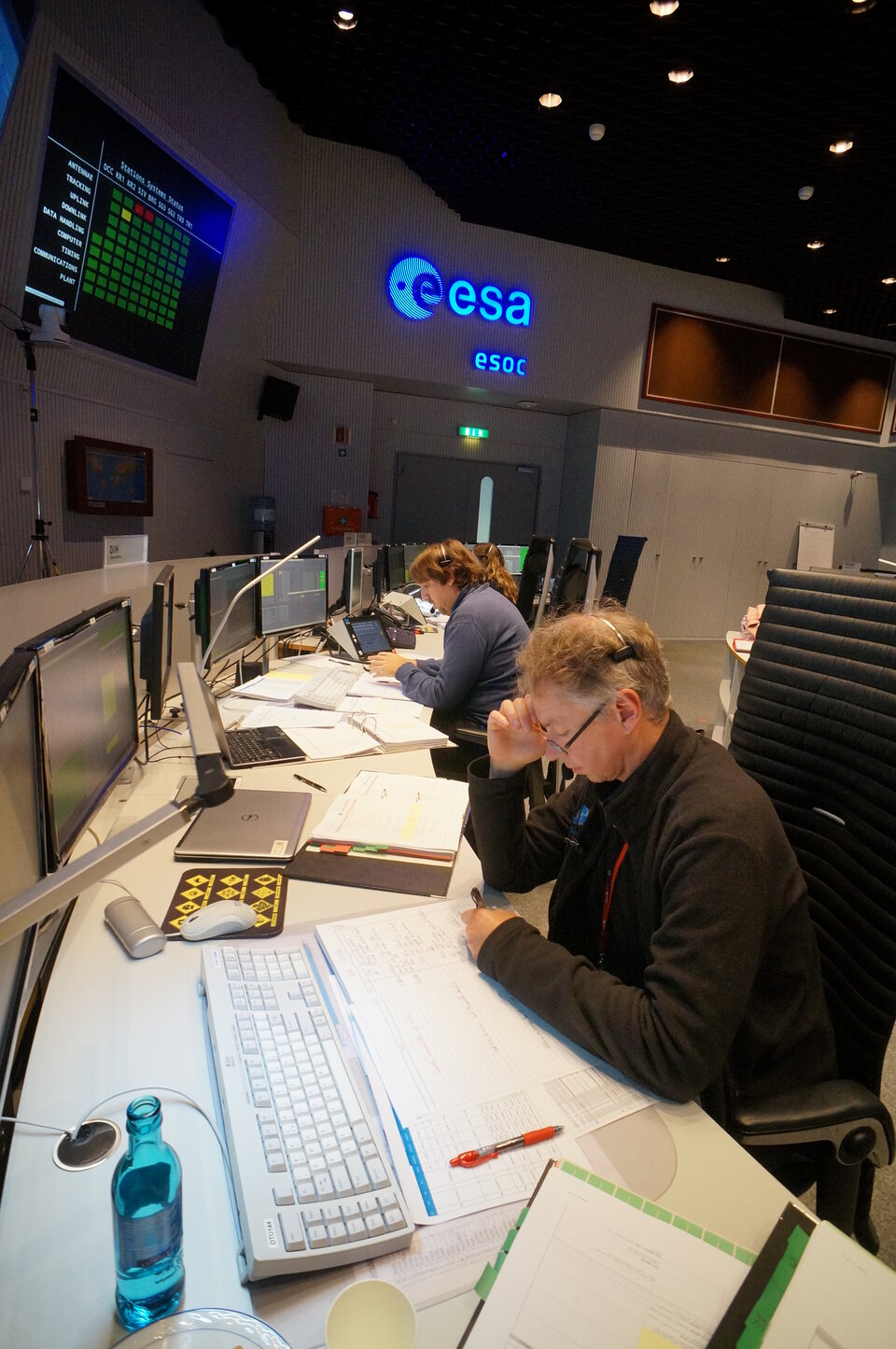
In the routine phase, the Sentinel-5P Flight Control Team comprises five engineers dedicated to the mission, augmented by a team of spacecraft controllers shared between all the Sentinel missions flown from ESOC (which include Sentinel-1 and -2). They work in a control room dedicated to the Sentinels under Spacecraft Operations Manager (SOM) Daniel Mesples and in close coordination with the teams operating the other Sentinel missions.
Daniel Mesples is French but has lived most of his life outside of France. He holds a Masters’ degree in Astronautics and Space Engineering from Cranfield University, UK. He started work at ESOC in 1992 on ERS-1 and ERS-2 as spacecraft operations engineer and then moved to Envisat in 1997. He was appointed SOM for Sentinel-5P in August 2014.
The team are supported by other specialists at ESOC, including experts from flight dynamics, ground facilities, tracking stations, space debris and mission data systems.
For the launch campaign and during the critical few weeks following the lift-off, the team will be augmented by additional engineers and specialists.
The team are responsible for all aspects of flight control, including mission planning, maintaining attitude and orbit control, monitoring the real-time status of the satellite and its power, navigation, thermal and propulsion systems, executing orbital manoeuvres and much else.
Mission operations overview
Like many Earth missions at ESA, the ground segment for Sentinel-5P (see more on building a ‘ground segment’) is split into two halves: the Flight Operations Segment (FOS) for flight control and the Payload Data Ground Segment (PDGS) for downloading, processing and distributing the Tropomi data.
This article focuses primarily on the FOS, based at ESOC.
Like many ESA missions, the scientific and operational life of the Sentinel-5P spacecraft will begin with the launch and early orbit phase.
LEOP - Launch and early orbit phase
Launch took place at 11:27 CEST (09:27 UTC) on 13 October 2017 on a Rockot rocket from the Plesetsk Cosmodrome in Russia.

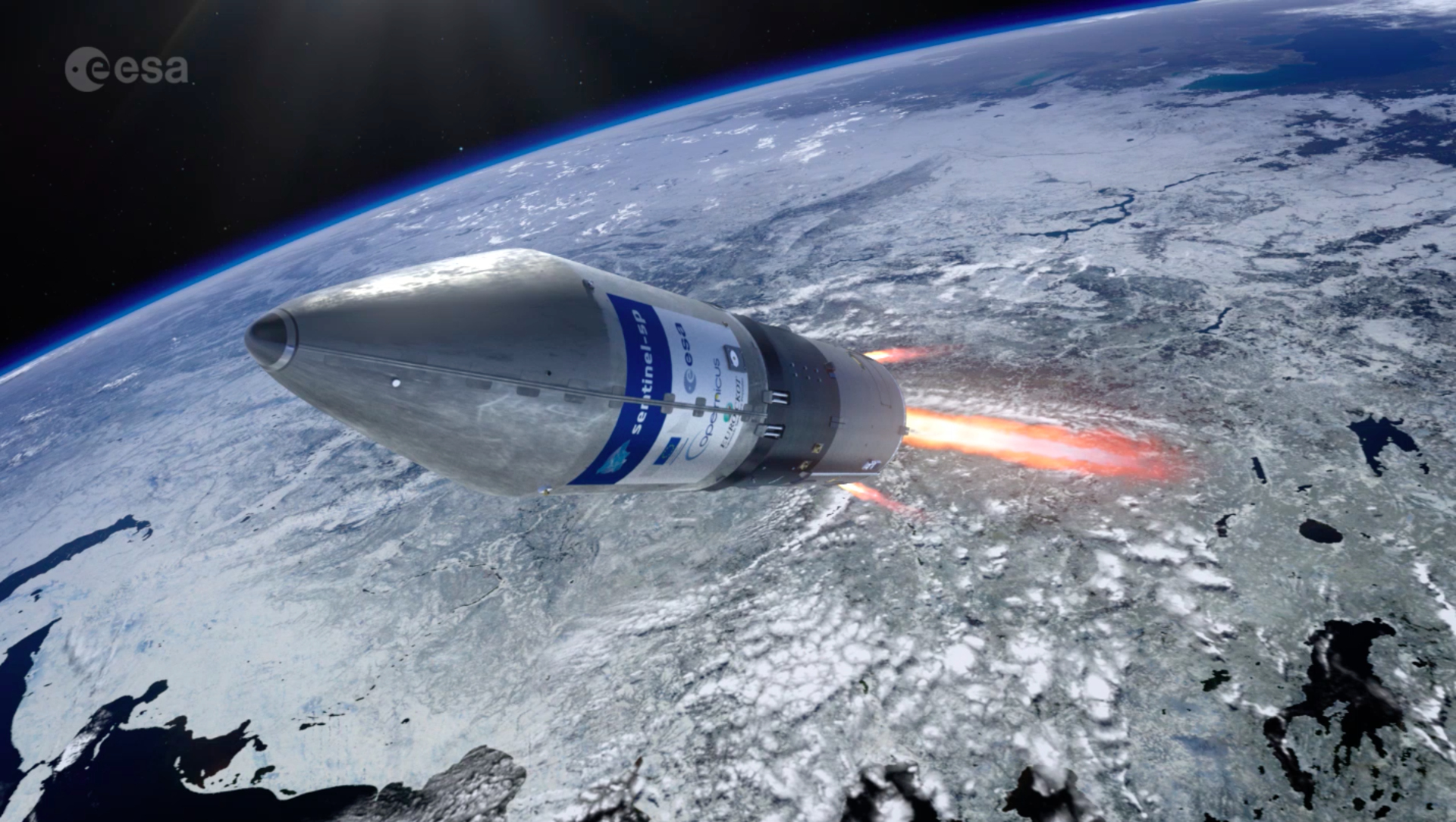
Access the video
During the planned three-day Launch and Early Orbit Phase (LEOP), the Mission Control Team at ESOC will provide 24-hr/day staffing in the Main Control Room at ESOC. During this period, the team will check out the entire satellite, ensuring that power, thermal, navigation, on-board computer, attitude control and other systems are all working as expected.
During LEOP, the Mission Control Team will make use of ground stations in in Sweden, the Antarctic, Canada and Norway.
The most important aspect of the LEOP is the deployment of the solar arrays followed by switching on the GPS and star trackers − cameras − which are essential to ensure the correct spacecraft pointing as it orbits Earth.
By the end of LEOP, the control team will have configured the spacecraft into its pre-operational mode; no manoeuvres are planned during LEOP.
Commissioning phase
After LEOP, Sentinel-5P will enter the Commissioning Phase, expected to last six months.
The purpose of the Commissioning Phase is to verify the health and performance of the satellite and of the payload. Tropomi instrument commissioning will be completed and it will then remain continuously switched on.
The commissioning phase begins with an initial period of four weeks during which the spacecraft is 'outgassing'. During this period, a series of manoeuvres will be executed to bring the spacecraft to its operational orbit behind Suomi-NPP. To avoid the contamination of the instrument optics during this period, the optics will remain protected by a cover, which will be later opened by a telecommand sent from ground.
Routine operations
In the routine, or nominal, mission phase, full science operations are performed on a 24-hr/day basis with interruptions planned only for orbit control manoeuvres, expected two to five times per year, or for instrument decontamination or 'annealing', expected one time annually each.

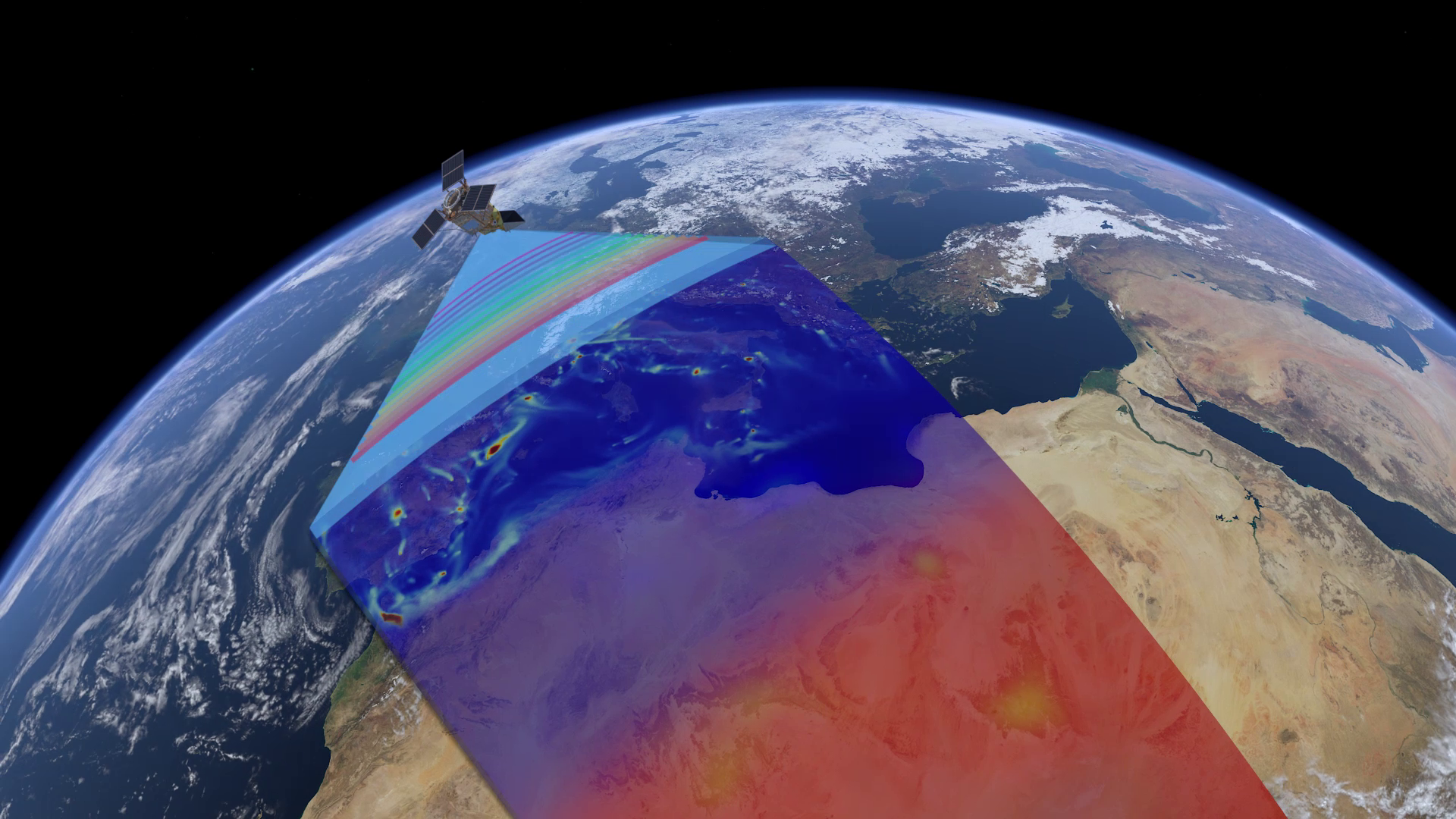
Access the video
For the Tropomi instrument, an orbital scheduling approach is used.
An ‘orbit’ is defined from satellite midnight to satellite midnight. Earth radiance measurements, which form the bulk of the measurements, are performed on the day side of the orbit. At the north side of the orbit, near the day-night terminator, the Sun is visible in the instrument’s solar port.
In every pass over Svalbard/Inuvik, payload data are transmitted to the ground through the X-band communications system and stored housekeeping telemetry data are acquired and forwarded to the mission controllers at ESOC. Telemetry is received and telecommands are uplinked during some of the passes via the S-band communications link (typically twice per day).
Operations ground segment and mission control system
As described earlier, the Sentinel-5p ground segment includes:
- The Flight Operations Segment (FOS) – Responsible for all flight operations of the Sentinel-5P spacecraft including monitoring and control, execution of all platform activities and commanding of the payload schedules.
- The Payload Data Ground Segment (PDGS) – The PDGS is responsible for payload and downlink planning, data acquisition, processing, archiving and downstream distribution of Sentinel-5P satellite data, while contributing to the overall monitoring of the payload and platform in coordination with the FOS.
The main tasks of the Sentinel-5P FOS include the commanding, tracking and monitoring of the satellite, related planning tasks as well as analyses of flight dynamics and the scheduling of orbit control manoeuvres.

The Sentinel-5P FOS comprises the following elements:
- ESA's ground station in Kiruna, Sweden
- The Mission Control System (MCS), located at ESOC
- The Mission Planning System, covering satellite operations and Tropomi instrument planning as well as S-/X-band downlink scheduling
- The Sentinel-5P system simulator for testing the MCS, database validation and FOS system-level validation and training of the Flight Control Team
- Network interfaces with the PDGS (hosted by DLR/EOC in Germany) for the reception of S-band telemetry downlinked to ground stations other than the Kiruna station and for the reception of information regarding S-/X-band ground station availability
- An interface with the Tropomi Operations Support Facility (OSF) at KNMI in the Netherlands for the reception of planning-related data required for the operation of the Tropomi instrument and for the delivery of Tropomi schedule data
- Interfaces with industry and with ESA external expert teams
- An interface with industry for the reception of on-board software maintenance data
- Facilities at ESOC related to flight dynamics, ground station operations, etc.
The FOS also provides an interface with the operations centre for the Suomi-National Polar-orbiting Partnership (Suomi-NPP) satellite mission operated by NASA/NOAA. This interface ensures the timely reception of data regarding scheduled orbit correction manoeuvres for Suomi-NPP by the Sentinel-5P FOS. This information enables the FOS to maintain a close formation constellation between the two satellites.
The team at ESOC will schedule orbit control manoeuvres necessary to maintain a nominal along-track separation between the two satellites of 5 min, with a tolerance of ±5 min.
The Sentinel-5P FOS was developed at ESOC and is based on the maximum utilisation of core elements in common with other Sentinel missions.
Platform and payload
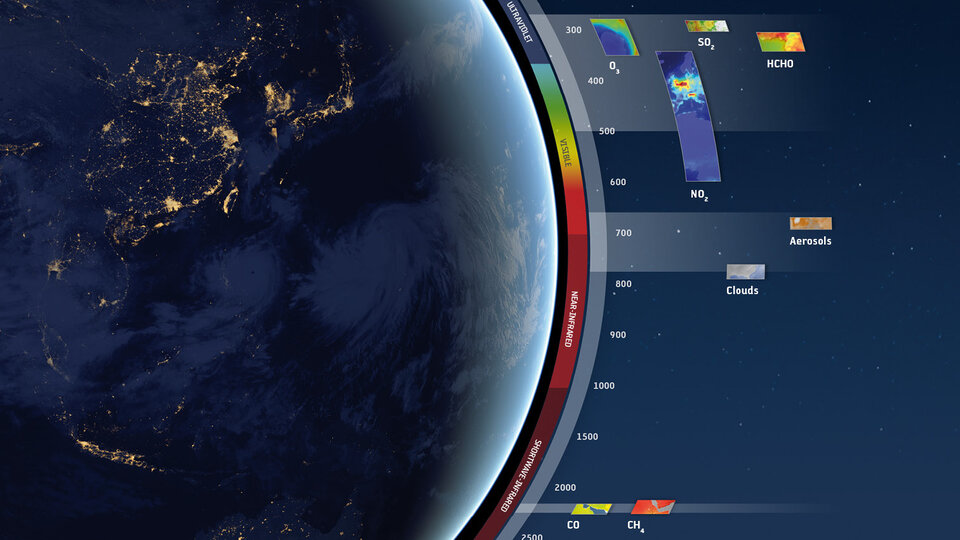
Platform
The satellite uses the AstroBus-L 250 M platform from Airbus D&S and thus draws on heritage from the SEOSat/Ingenio program of Spain, developed under the control of ESA, and from SPOT-6 and -7, two commercial imaging missions currently under development with Airbus D&S internal funding.
Including an on-going export contract with Kazakhstan using this platform, Sentinel-5P is the fifth mission in the series and can rely on a robust and proven platform design.
More details via ESA’s EO mission directory.
| Spacecraft mass, power | 820 kg (at launch), 1500 W |
| Spacecraft design life | 7 years with propellant for 10 years of operations |
| Attitude & orbit control system | 3-axis stabilized based on multi-head star tracker and fibre-optic gyro |
| Size | 3.35 m high, 5.63 m across |
| Radio frequency communications |
|
| Onboard data storage | 480Gbit Data collected / orbit: 139 Gbit |
Payload
The Dutch have been designing and building satellite atmospheric sensors, such as those carried on ERS and Envisat, since the 1990s. Building on this technical heritage, Tropomi – the most advanced multispectral imaging spectrometer to date – was developed jointly by ESA and the Netherlands Space Office.
It observes sunlight that is scattered back to space by Earth’s surface and atmosphere, detecting the unique fingerprints of gases in different parts of the spectrum.
What sets Tropomi apart is that it measures in the ultraviolet and visible (270–500 nm), near-infrared (675–775 nm) and shortwave infrared (2305–2385 nm) spectral bands. This means that a wide range of pollutants such as nitrogen dioxide, ozone, formaldehyde, sulphur dioxide, methane and carbon monoxide can be imaged more accurately than ever before. With a resolution as high as 7 km × 3.5 km, it has the potential to detect air pollution over individual cities.
For full details on the Sentinel-5P instruments and data applications access ESA's EO mission directory.


